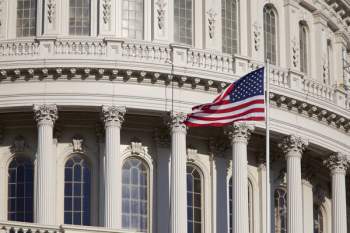
Too Much Power

Popular In Constitution
Purpose Of Lifetime Appointment And Pros And Cons Enumerated Powers Bicameral Legislature Background Article 3 Of The Constitution We The People 1st Amendment Who Wrote The Constitution Judicial Review Equal Protection Clause Three Fifths Compromise 10th Amendment 5th Amendment
The criticisms that the United States Supreme Court has received over the years are largely related to judicial activism. Martin v. Hunter's Lessee helped to extend the Court's reach of power even further, giving the Court authority over State supreme courts in all matters related to Federal law. The Court continued to operate in an entrusted state, helping to develop and define Federal law in a rational manner. The Chrysler Chapter 11 Bankruptcy U.S. Supreme Court opinions received a lot of criticism in 2009, when America's third largest automaker faced bankruptcy and a possible liquidation during the automotive industry crisis of 2008 and 2009. As the world's economies took a downfall, one of the hardest hit industries was the American automotive industry, largely due in part to the energy crisis that weakened the economy between 2003 and 2008. A focus on low-fuel economy sport utility vehicles in the early part of the decade proved to be a devastatingly regretful decision, as their popularity dwindled when customers began to instead purchase automobiles which produced better gas mileage. Although all automakers were hurt during the economic crisis, Chrysler was one of the most affected, and it became the first American automaker to face bankruptcy since 1933. When Chrysler failed to reach a restructuring plan on their own before the April 30, 2009 deadline, a bankruptcy judge approved a Government restructuring plan and a sale of Chrysler, a rare intervention on private enterprise by the Federal Government. The plan was to allow the assets of the company to be sold to an Italian automaker, Fiat, with the U.S. Government and Canadian government having a minority stake on the company. The sale and restructuring plan was blocked by Indiana pension plan bondholders, appealing it to the U.S. Appeals Court for the Second Circuit. The sale was allowed, but followed by further appeal to the U.S. Supreme Court. Justice Ruth Bader Ginsburg, in an emergency statement put a hold on the sale. The next day, however, on June 9, 2009, the U.S. Supreme Court allowed the sale and procedure for the New Chrysler organization restructuring to continue. It was found later in a written document that the Indiana bondholders did not "carry the burden" of proving that the Supreme Court should block the sale. The decision of Justice Ruth Bader Ginsburg was a controversial moment in the U.S. Supreme Court history, which attempted to reverse the decision, at least temporarily. Though many critics believe that the actions by Ginsburg and the initial Supreme Court opinions were unnecessary and expanded beyond the rightful reach of the Supreme Court, others believe that it allowed for further meticulous deliberation, which ultimately led to the final decision of allowing the sale to move forward. This extra review allowed the Supreme Court to keep the other branches in check, especially in a rare situation in which the Federal Government unconventionally stepped into private sector territory to save a failing company.



















